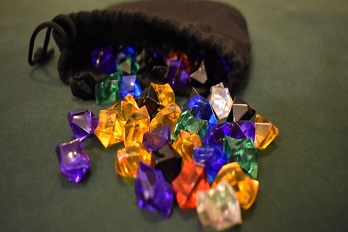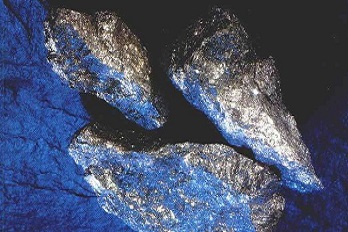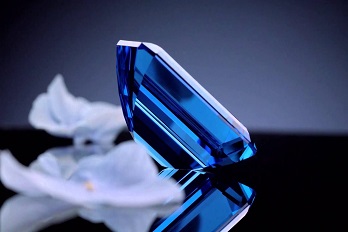Aquamarine Mining
AQUAMARINE :
Aquamarine is one of the most admired and famous gemstones, distinguished by its many first-rate qualities. Aquamarine is composed of beryllium, aluminum, and silicate. The name "aquamarine" derives from the Latin phrase "water of the sea". It is nearly as prized as the classics: ruby, sapphire, and emerald. In fact, it is closely related to emerald, both belonging to the beryl family.
WHERE DOES IT FORM?
Aquamarine forms in indigenous rocks that provide the optimal conditions for its formation. The size of the crystal correlates with the cooling rate; larger crystals form when cooling occurs slowly. These gemstones are created in nature under specific, intense geological conditions. When mineral-rich molten magma flows into the rock layers of mountain ranges and cools, it forms into cavities filled with mineral-saturated fluid, heated to temperatures as high as 1,112°F.
MINING AND EXTRACTION OF AQUAMARINE:
The process of mining and extracting aquamarine involves several sequential steps, from initial prospecting and exploration to the final distribution of the gemstones. Here's a detailed overview of the entire process:
Prospecting and Exploration:
The first phase of aquamarine mining begins with prospecting and exploration. Geologists and mining experts employ various methods such as geological mapping, remote sensing, and sampling to locate potential sites where aquamarine deposits might be found.
Site Preparation:
Once a promising aquamarine deposit is identified, preparations are made at the site. This involves clearing vegetation, leveling the ground, and establishing necessary infrastructure such as access roads, accommodation for workers, and facilities for equipment storage.
Mining Methods:
a. Open-Pit Mining: For large-scale aquamarine extraction, open-pit mining is the preferred method. It involves removing layers of overburden—soil, vegetation, and rock cover—to expose the aquamarine-bearing ore. Heavy machinery such as excavators, bulldozers, and trucks is used to excavate and transport the ore.
b. Underground Mining: In cases where aquamarine deposits are deeper or surrounded by hard rock, underground mining techniques are employed. This method requires creating tunnels and shafts to access the gem-bearing veins or ore bodies.
Extraction and Processing:
Once the aquamarine-bearing ore is extracted from the ground, it is transported to a processing plant. Here, the ore undergoes crushing, grinding, and sometimes washing to separate the aquamarine crystals from the surrounding rock and minerals. Various methods like gravity separation, froth flotation, and magnetic separation are utilized to concentrate and refine the aquamarine.
Sorting and Grading:
Following initial processing, the aquamarine crystals are sorted based on their size, shape, color, and clarity. Qualified gemologists evaluate and grade the gemstones according to established criteria, including the Four Cs (color, clarity, cut, and carat weight). Only the highest-quality aquamarine crystals meet the standards for use in gemstone jewelry.
Cutting and Polishing:
Selected aquamarine gemstones proceed to the cutting and polishing stage. Skilled artisans use specialized equipment to shape and facet the rough aquamarine crystals into exquisite gem-quality stones. The cutting process aims to enhance the gem's brilliance, color intensity, and overall aesthetic appeal.
Marketing and Distribution:
Once cut and polished, aquamarine gemstones are prepared for distribution in the global gemstone market. Gem dealers, jewelry manufacturers, and retailers play key roles in marketing and selling aquamarine to consumers worldwide.
Environmental Considerations:
It is crucial that all mining activities adhere to environmental regulations and adopt responsible mining practices. This ensures minimal ecological impact and promotes sustainable extraction of aquamarine and other minerals.
By following these steps and practices, the mining and extraction of aquamarine can yield beautiful gemstones while also promoting environmental stewardship and sustainable development.
COMPOSITION:
Variety Of :Beryl( Be3Al2Si6O18)
Cleavage :One direction, Poor.
Crystal System :Hexagonal
Pleochroism :Weak
Birthstone For :March
Color :Various shades of blue to blue-green.
Refractive Index :1.57 - 1.60
Birefringence :0.004 - 0.008
Hardness :7.5 - 8
PHYSICAL PROPERTIES:
The chemical composition of aquamarine, like all other beryls, is Be3Al2(SiO3)6. The stone derives its color from trace amounts of iron embedded in its hexagonal crystalline structure. According to nautical lore, aquamarine was believed to ensure safe passage for sailors, leading many to wear the stone on their bodies or keep it under their pillow for peaceful sleep. Sailors also believed that mermaids had tails made of aquamarine. During the Middle Ages, it was thought to possess ornate health properties, and some carried it to protect themselves from poison.
Aquamarine can range from almost clear to a rich blue in color and is sometimes heat-treated to enhance its color. Due to its clear and lustrous appearance, aquamarine is typically cut in faceted styles to maximize its sparkle in the light. Caring for aquamarine is relatively simple because the stone is hard and resistant to cracking. It can be cleaned with a mild soap and water solution and gently brushed with a toothbrush if it gathers dirt or dust. When selecting a detergent, caution should be taken as some may react with the metal in which the stone is set. Aquamarine should be kept away from heat to avoid damaging the stone.
Maintaining a balanced oil and humidity level is important for aquamarine, and wearing it next to the skin helps achieve this. However, it's advisable to avoid wearing aquamarine during physically demanding activities to prevent it from cracking or chipping if subjected to impact.
Color:
Stones with a distinct blue color-without any green or gray-are generally the most precious. Although almost all gemstones have some level of imperfections, the highest quality aquamarine is clear, with no internal or external flaws.
Cut:
A well-executed cut enhances an aquamarine's depth of color and brilliance while minimizing imperfections. The cut significantly influences the value of any gemstone. Therefore, the faceting (the angles at which light reflects) is also crucial for the stone's appearance.
Clarity:
The finest aquamarines are translucent and clear, ranging in color from near colorless to sea green and sky blue. Inspect the stone for any flaws and ensure it is free from chips or scratches.
Carat:
In aquamarines, large gems are often used for crafting pendants. Carat, the measure of a gem's size, contributes significantly to its value. Therefore, the larger the aquamarine, the more expensive it will be.
In conclusion, remember that the color, cut, clarity, and carat weight determine the quality and value of aquamarine.
NATURAL OCCURRENCE:
Brazil, Pakistan, Myanmar, Russia, China, Namibia, Mozambique, Zambia, Kenya, United States (Colorado and California), India, Siberia, Srilanka.
AVAILABLE COLORS:
Colorless, Blue, Green, yellow, faint light blue, bluish Green.










